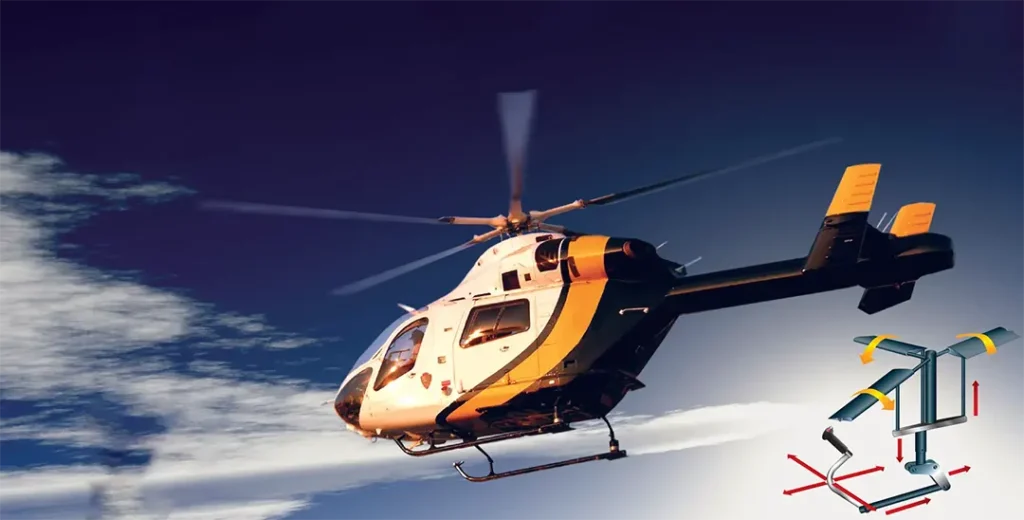
The part on helicopter flying training is a thorough technical manual created especially to help candidates getting ready for their private, commercial, or flight instructor pilot certifications that include a helicopter class rating. For certified flight instructors as well, this part is an invaluable teaching resource.
Preparing for Pilot Certificates
This training part equips you with the knowledge and abilities you need to successfully achieve your desired pilot certificates, whether your goal is to become a flight instructor, private pilot, or commercial pilot. Numerous subjects are covered, such as emergency procedures, weather, helicopter aerodynamics, flight controls, systems and components, flight instruments, navigation, and much more.
A Valuable Training Aid for Flight Instructors
This training segment is especially beneficial to certified flight instructors because it provides a thorough guide to teaching helicopter flying.
Through the use of this section, flight instructors may make sure that the knowledge they are imparting to their students is current and accurate, which will ultimately result in safer and more skilled helicopter pilots.
In general, both certified flight instructors and aspiring pilots can benefit much from the section on helicopter flying training. It offers the information and direction needed to earn pilot certificates and improve teaching abilities, both of which eventually advance the expansion and advancement of the aviation sector.
https://aircraftsystemstech.com/humix/video/UJ1fcoQ5dQf
Introduction to the Helicopter
- Introduction to the Helicopter
- Turbine Age and Uses
- Helicopter Rotor System
- Controlling Flight
- Helicopter Flight Conditions
Aerodynamics of Flight
- Aerodynamics of Flight
- Forces Acting on the Aircraft
- Airfoil Terminology, Definitions and Types
- Airflow and Reactions in the Rotor System
- Hovering Flight
- Vertical Flight
- Forward Flight
- Sideward, Rearward and Turning Flight
- Autorotation
Helicopter Flight Controls
Helicopter Components, Sections, and Systems
- Helicopter Components, Sections and Systems
- Helicopter airframe and Fuselage
- Main Rotor System
- Swash Plate Assembly and Freewheeling Unit
- Antitorque and Drive System
- Engines
- Transmission System
- Fuel Systems
- Electrical Systems
- Hydraulics
- Stability Augmentations Systems
- Environmental Systems
- Anti-Icing Systems
Rotorcraft Flight Manual
Weight and Balance
Helicopter Performance
Ground Procedures and Flight Preparations
Basic Flight Maneuvers
- Basic Flight Maneuvers
- The Four Fundamentals
- Straight-and-Level Flight
- Turns
- Normal Climb and Normal Descent
- Vertical Takeoff to a Hover
- Hovering
- Taxiing
- Normal Takeoff From a Hover and the Surface
- Crosswind Considerations During Takeoffs
- Ground Reference Maneuvers
- Traffic Patterns
- Approaches and Go-Around
Advanced Flight Maneuvers
- Advanced Flight Maneuvers
- Reconnaissance Procedures
- Maximum Performance Takeoff
- Running/Rolling Takeoff
- Rapid Deceleration or Quick Stop
- Steep Approach
- Shallow Approach and Running/Roll-On Landing
- Slope Operations
- Confined Area Operations
- Pinnacle and Ridgeline Operations
Helicopter Emergencies and Hazards
- Helicopter Emergencies and Hazards
- Autorotation
- Vortex Ring State
- Retreating Blade Stall
- Ground Resonance
- Dynamic Rollover
- Low-G Conditions and Mast Bumping
- Low Rotor RPM and Rotor Stall
- System Malfunctions
- Multiengine Emergency Operations
- Lost Procedures
- VFR Flight into Instrument Meteorological Conditions
- Emergency Equipment and Survival Gear
Night Operations
- Night Operations
- Visual Deficiencies
- Vision in Flight
- Night Vision
- Night Flight
- Helicopter Night VFR Operations
Effective Aeronautical Decision-Making (ADM)
- Effective Aeronautical Decision-Making
- Aeronautical Decision-Making (ADM)
- Pilot Self-Assessment
- Single-Pilot Resource Management
- Risk Management
- Workload or Task Management
- Situational Awareness
- Controlled Flight Into Terrain (CFIT) Awareness
- Automation Management
